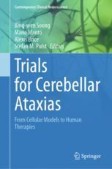Search
Search Results
-
HMGB1 mediates synaptic loss and cognitive impairment in an animal model of sepsis-associated encephalopathy
BackgroundMicroglial activation-mediated neuroinflammation is one of the essential pathogenic mechanisms of sepsis-associated encephalopathy (SAE)....

-
Trophic Factors: Neurotrophic Factors
Neurotrophic factors support survival, process outgrowth, and phenotypic differentiation of neurons during development. Many neurotrophic factors are...
-
Understanding microglial responses in large animal models of traumatic brain injury: an underutilized resource for preclinical and translational research
Traumatic brain injury (TBI) often results in prolonged or permanent brain dysfunction with over 2.8 million affected annually in the U.S., including...

-
Specification and Development of GABAergic Interneurons
Of all cerebellar cells, the development of inhibitory interneurons is arguably least understood. The issue is further convoluted by the fact that...
-
Microglial function, INPP5D/SHIP1 signaling, and NLRP3 inflammasome activation: implications for Alzheimer’s disease
Recent genetic studies on Alzheimer’s disease (AD) have brought microglia under the spotlight, as loci associated with AD risk are enriched in genes...

-
Cerebellar Biochemistry/Pharmacology
Cerebellar Purkinje cells (PCs) are localized in the cerebellar cortex and are characterized by highly developed dendrites, which receive different...
-
Aryl Hydrocarbon Receptor in Glia Cells: A Plausible Glutamatergic Neurotransmission Orchestrator
Glutamate is the major excitatory amino acid in the vertebrate brain. Glutamatergic signaling is involved in most of the central nervous system...

-
Distinct Effects of BDNF and NT-3 on the Dendrites and Presynaptic Boutons of Develo** Olfactory Bulb GABAergic Interneurons In Vitro
Brain-derived neurotrophic factor (BDNF) and neurotrophin 3 (NT-3) are known to regulate neuronal morphology and the formation of neural circuits,...

-
Perivascular cells induce microglial phagocytic states and synaptic engulfment via SPP1 in mouse models of Alzheimer’s disease
Alzheimer’s disease (AD) is characterized by synaptic loss, which can result from dysfunctional microglial phagocytosis and...

-
The Role of Transposable Elements in Long-Term Memory Formation
AbstractA number of experimental studies are described that challenge the significance of synaptic plasticity and prove the role of transposable...

-
Silencing the Output of Cerebellar Neurons Using Cell Type-Specific Genetic Deletion of Vesicular GABA and Glutamate Transporters
Neurons are distinguished from other cell types by their inherent properties such as electrical excitability and their ability to rapidly communicate...
-
Inferior Olive: All Ins and Outs
The inferior olive in the ventral medulla oblongata provides climbing fibers to Purkinje cells in the cerebellar cortex as well as collaterals to the...
-
Effect of bisphenol A on the neurological system: a review update
Bisphenol A (BPA) is an endocrine-disrupting chemical (EDC) and one of the most produced synthetic compounds worldwide. BPA can be found in epoxy...

-
Aberrant astrocyte protein secretion contributes to altered neuronal development in multiple models of neurodevelopmental disorders
Astrocytes negatively impact neuronal development in many models of neurodevelopmental disorders (NDs); however, how they do this, and if mechanisms...

-
A 3D human co-culture to model neuron-astrocyte interactions in tauopathies
BackgroundIntraneuronal tau aggregation is the major pathological hallmark of neurodegenerative tauopathies. It is now generally acknowledged that...

-
The impact of purine nucleosides on neuroplasticity in the adult brain
Neuroplasticity refers to the nervous system’s ability to adapt and reorganize its cell structures and neuronal networks in response to internal and...

-
Major Psychiatric Disorders
Glial and immune cells are involved to various degrees in initiation and progression of mental diseases. However, one must judge each disease...
-
Linking Inflammation, Aberrant Glutamate-Dopamine Interaction, and Post-synaptic Changes: Translational Relevance for Schizophrenia and Antipsychotic Treatment: a Systematic Review
Evidence from clinical, preclinical, and post-mortem studies supports the inflammatory/immune hypothesis of schizophrenia pathogenesis. Less evident...

-
Tetrahydrobiopterin and Its Multiple Roles in Neuropsychological Disorders
Tetrahydrobiopterin (BH4) is a multifunctional co-factor of various enzymes and a substantial amount of studies have shown BH4 as a key regulator in...

-
Neonatal Proinflammatory Stress and the Maturation of Intercellular Communication in the Hippocampus
Neuroinflammatory processes, particularly those induced by infectious agents, are associated with activation of the microglia and subsequent...
